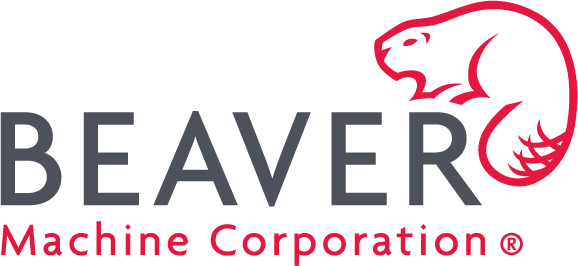The Definitive Handbook for Sourcing Candy Machines Worldwide
In recent years, the global candy market has experienced remarkable growth, with a valuation of approximately $200 billion in 2020 and projected to reach over $300 billion by 2027, according to a report by Fortune Business Insights. This surge in demand is driving businesses to explore various avenues for distributing confectionery items, making candy machines an essential investment for retailers and entrepreneurs alike. As consumer preferences continue to evolve, candy machines have emerged as a versatile solution, allowing for customization and enhancing the customer experience while capitalizing on the booming snack industry.
The rise of vending technology, coupled with the increasing popularity of impulse purchases, has positioned candy machines as a pivotal element in retail strategies. According to a survey by IBISWorld, the vending machine industry, which includes candy machines, is projected to grow at an annual rate of over 2% in the next several years. This definitive handbook aims to provide comprehensive guidance on sourcing candy machines worldwide, exploring key considerations such as market trends, supplier evaluations, and operational best practices. By leveraging these insights, businesses can successfully navigate the competitive landscape and harness the potential of candy machines to boost sales and customer engagement.

Understanding the Global Candy Machine Market: Trends and Growth Projections
The global candy machine market is poised for significant growth in the coming years, driven by evolving consumer preferences and an increasing focus on the convenience of vending solutions. As global trends reveal a shift towards on-the-go snacking, the demand for candy machines, which facilitate quick treats in various settings, is expected to rise. This trend is affirmed by an estimated market value of $426.2 billion in sparkling water by 2024, demonstrating an overall consumer shift towards indulgent yet convenient options. Moreover, the increase in disposable income and urbanization in various regions is likely to enhance the appeal of candy machines. With market projections anticipating an increase to $477.5 billion by 2025 and reaching around $1,083.5 billion by 2032, candy machines could see substantial growth parallel to other convenience-driven sectors. Additionally, the global juice extractor market, expected to grow from $22.8 billion in 2024 to $27.1 billion by 2033, highlights the importance of beverage vending solutions as key players in the food-service environment. The candy machine sector must leverage emerging trends, such as the push for healthier snacks and dietary options, to remain relevant. With reports indicating a compound annual growth rate (CAGR) of 1.9% in the juice extractor market and 4.6% in the edible animal fat market, there’s potential for innovation and diversification within the candy machine offerings. Brands that align their product offerings with these trends are likely to capture the shifting behaviors of their consumer base effectively.

Key Factors Influencing Sourcing Decisions for Candy Machines
When considering the sourcing of candy machines worldwide, various key factors come into play that can significantly influence a company's decision-making process. First and foremost, understanding the market demand is crucial. Businesses must research regional preferences for candy types and vending machine features to tailor their offerings accordingly. Markets can vary widely; for instance, some regions may favor gumball machines, while others may prefer machines dispensing packaged candies or even healthy snacks. Recognizing these preferences ensures that the sourcing process aligns with consumer expectations.
Another vital factor is the reliability of suppliers. Companies need to conduct thorough research and due diligence on potential suppliers, considering their reputation, production capacity, and the quality of their machines. Establishing a relationship with trustworthy vendors can mitigate risks related to product defects and supply chain disruptions. Companies should also look for suppliers who offer efficient customer service, as timely support can be crucial when dealing with machinery that requires maintenance or repairs.
Cost considerations also play a significant role in sourcing decisions. Companies must balance the quality of machines with their budgets, exploring options that provide the best value without compromising on functionality. This often involves analyzing shipping and import duties, especially when sourcing from international markets. Lastly, staying updated on global trends and technological advancements can further inform sourcing strategies, enabling businesses to remain competitive in an ever-evolving marketplace. By taking these key factors into account, companies can make informed and strategic decisions that enhance their candy machine operations globally.

Assessing the Most Reliable Countries for Candy Machine Manufacturing
The global candy machine manufacturing landscape continues to evolve, with numerous countries emerging as key players. According to industry reports, the Asia-Pacific region, spearheaded by China, has become the hub for candy machine production, attributed to its cost-effective manufacturing processes and robust supply chains. In 2022, the region accounted for approximately 43% of the global candy machine market, reflecting a strong growth trajectory driven by increasing demand for automation in confectionery production.
However, as this sector expands, safety regulations become paramount. Recently, market regulators in Shanghai issued a risk warning concerning mini cotton candy machines, highlighting that while all tested samples met food hygiene standards, electrical safety issues were prevalent. This incident underscores the critical importance of stringent safety evaluations for candy machines, particularly as manufacturers scale up production to meet rising consumer demands. It's essential for importers and businesses to prioritize sourcing from countries that not only offer cost advantages but also adhere to high safety and quality standards.
Furthermore, countries like Germany and Italy continue to maintain their reputations for high-quality machine manufacturing, focusing on advanced technology and precision engineering. Reports suggest that European manufacturers, while facing higher production costs, are favored for their commitment to safety and reliability, making them a preferred choice for businesses seeking durable and safe candy machines. As the market dynamics shift, understanding the strengths and weaknesses of different manufacturing regions will be crucial for businesses looking to make informed sourcing decisions.

Evaluating the Cost Implications of Sourcing Candy Machines Globally
When evaluating the cost implications of sourcing candy machines globally, businesses must consider a variety of factors that can significantly impact their bottom line. According to a report from IBISWorld, the candy vending machine industry has shown steady growth, with revenue projections reaching $2.1 billion by 2025. This growth suggests that investing in this sector might yield positive returns; however, the varying costs associated with sourcing candy machines from different regions must be carefully analyzed.
One major factor influencing cost is the geographic location of production. For instance, sourcing machines from Asia may offer lower initial costs due to cheaper labor and manufacturing expenses. A survey by Statista indicates that countries like China and Vietnam have manufacturing costs that are approximately 30-40% lower compared to North America and Europe. However, businesses must factor in shipping costs, import tariffs, and potential delays, which can erode these initial savings.
Additionally, quality and compliance standards can significantly affect sourcing decisions. Manufacturers in regions with strict compliance regulations often provide higher-quality products which may come with higher price tags. A report by Market Research Future highlights that while upfront costs may increase, investing in high-quality machines can lead to lower maintenance costs and improved customer satisfaction over time. This long-term perspective is essential when evaluating sourcing options to ensure that the investment aligns with business objectives and consumer expectations.
Best Practices for Quality Control in Candy Machine Sourcing Processes
Sourcing candy machines has become a critical component of the confectionery industry, especially as demand continues to rise. In 2022, the global candy market was valued at approximately $202 billion, with a projected growth rate of 4.5% annually through 2027 (Source: Grand View Research). As such, ensuring quality control in the sourcing process of candy machines is paramount for manufacturers and retailers alike. By implementing best practices in quality control, companies can mitigate risks associated with defective machines that can lead to production delays and increased operational costs.
One of the key best practices in quality control is the establishment of stringent supplier evaluation criteria. According to a report from the International Organization for Standardization (ISO), companies that thoroughly vet their suppliers and assess their production capabilities experience a 30% reduction in operational issues. Evaluating suppliers based on their compliance with international quality standards, production capacity, and track record can help in selecting partners that align with quality expectations. Regular audits and performance reviews further enhance this oversight, ensuring that suppliers maintain high standards throughout the sourcing process.
In addition to supplier evaluation, continuous monitoring of the sourcing and production phases is crucial. Implementing modern technology, such as Internet of Things (IoT) devices, can enable real-time monitoring of machine performance and quality metrics. A report from MarketsandMarkets forecasts that the IoT in manufacturing market will reach $45 billion by 2025, highlighting its growing importance in ensuring quality. By leveraging technological advancements, companies can identify potential quality issues early, thereby reducing waste and improving overall efficiency in production. These practices not only enhance the integrity of the candy machines being sourced but also fortify the overall reputation and success of businesses in the confectionery market.

